BY CHRIS SLAY
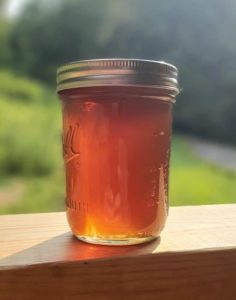 A quart of very fresh wildflower honey will taste like a sunny summer day all year long.
A quart of very fresh wildflower honey will taste like a sunny summer day all year long.
During the honey flow period, many established colonies made more honey than they need. In this four-part series, we’ll explore exactly what honey is, what differentiates some honey from others, traditional and modern medical uses, and the rich history humans have with honey as a food source. We’ll also disprove some common misconceptions about honey. Welcome back to the fascinating life cycle of the honey bee.
Honey begins as nectar from flowers. Worker bees collect nectar and pollen for food. The nectar that isn’t immediately consumed is stored in bees’ honey bellies and taken back to the hive. Honey bees’ salivary enzymes and proteins break down the nectar’s complex sucrose and starches into simple, more quickly digested sugars — glucose and fructose.
Because wild yeasts and bacteria can easily live on nectar, robbing its nutrients, honey bees reduce the nectar’s water content in two astonishing ways. First, they repeatedly regurgitate the nectar into their mandibles to create bubbles that provide a large surface area for water to evaporate. Second, after storing the partially dehydrated solution in open wax cells, groups of workers will constantly fan their wings, producing heat and airflow to reduce the water content even further. After the solution lowers to a water content of 18% to 15.5%, bees cap the cells with wax.
The nectar is now beyond the saturation point of water. This means there is far more sugar dissolved in what little water remains than ever could be dissolved in an equivalent volume of water.
For example, it’s impossible to dissolve one cup of sugar in seven teaspoons of water. This is honey.
Honey’s supersaturation of sugar is incredibly stable on molecular and chemical levels. Yeasts and bacteria are deterred from living on honey while in the capped cells, which ensures a very fresh and untainted food source.
The type of honey a colony produces depends entirely on the nectar’s primary source. Wildflower, the most abundant type of honey, is a combination of all of the thousands of different flowers from which the bees forage. Wildflower honey is typically light to dark amber in color and can have a very complex, multi-faceted taste. Other local nectar sources, such as basswood, tulip poplar, and sourwood trees, produce a much lighter-tasting, grassy-golden honey. Regardless of what the label says, no one knows what other flowers’ nectars are present without microscopically identifying the unique pollen cells in honey. Bees don’t discriminate.
At retail, honey is offered in many forms, but it’s either raw or processed. Most commercially produced honey is pasteurized, which ensures bacterial decontamination that may occur after uncapping the cells for extraction and the packaging process. Raising the temperature of honey above 104F also diminishes many of the unique qualities of honey. If you’ve ever had milk fresh from the cow, you understand. Commercial honey may also contain additives like high-fructose corn syrup or artificial coloring.
We are here to share current happenings in the bee industry. Bee Culture gathers and shares articles published by outside sources. For more information about this specific article, please visit the original publish source: All about honey – part 1 | Community News | thetomahawk.com
]]>Insects use the same types of non-hexagonal cells to overcome building challenges
AUBURN UNIVERSITY COLLEGE OF SCIENCES AND MATHEMATICS
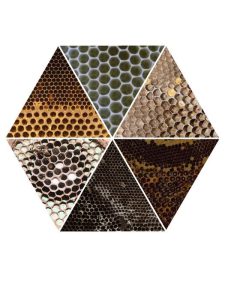
IMAGE: PHOTO CREDIT: MICHAEL L. SMITH
At first glance, the hexagonal cells build by honey bees and social wasps may seem similar, but they are significantly different. Honey bees build using wax, whereas wasps use paper. Honey bees build their double-sided combs vertically, whereas wasps build single-sided comb horizontally (i.e., the opening of each cell faces downward).
Indeed, the hexagonal cells built by these two groups have independent evolutionary origins. Just like sharks and whales have similar body plans due to their watery environment, bees and wasps build hexagonal cells because the shape maximizes strength and storage area, while minimizing building materials.
But what happens when perfectly hexagonal cells cannot be built? Do bees and wasps fix their building problems in the same way?
In a subset of honey bee and wasp species, workers build two different sizes of hexagons. The smaller cells are used for rearing workers, and the larger cells are used for rearing reproductives; drones and queens. This difference in cell sizes creates an inherent architectural problem: how do you tile two differently-sized hexagons within a single sheet of comb?
To determine how different species solved the same architectural problem, the researchers needed nest images that included both worker and reproductive cells in the same comb.
First-author Dr. Michael L. Smith, Assistant Professor in the Department of Biological Sciences at Auburn University, and Affiliate Member of the Max Planck Institute for Animal Behavior, contacted researchers across the globe for potential images. They then used custom-built software to extract per-cell metrics from 22,745 individual cells.
In some species, like Metapolybia mesoamerica, worker and reproductive cells are the same size, so there was no architectural hurdle to overcome. In other species, like Apis andreniformis, reproductive cells are up to 2.7 times larger than worker cells, which creates a serious building problem – how to combine these wildly different hexagons in an efficient way?
Looking across 10 species, the researchers found that as the scale of the building problem increased (the size difference between worker and reproductive cells), workers began incorporating non-hexagonal cells. These irregular cells were mostly 5- and 7-sided, but they were consistently built in pairs, with the 5-sided cell built on the worker-side, followed by a 7-sided cell on the reproductive side. This pattern was seen in all the honey bee and wasp species that had a cell-size difference to overcome. For a group of insects renowned for their hexagonal cells, this alone was interesting, as it showed that they all rely on the same non-hexagonal configurations.
The researchers then built a mathematical model that would predict, based on the cell-size difference, how many non-hexagonal cells should be incorporated into the worker-to-reproductive transition. Surprisingly, some of the species were consistently performing better than expected. Upon closer investigation, the researchers saw that these species also incorporated intermediate-sized cells into the transition region. The intermediate-sized cells were still hexagonal, but they allowed the insects to “split the difference” and turn the cell-size transition into a series of smaller ones, which didn’t require non-hexagonal cells.
These same building tricks were adopted across all species of bees and wasps investigated. Despite being separated by over 179 million years of evolution, using different building materials, and independent origins of hexagonal cells, these species have all arrived at the exact same solution to this scalable architectural problem.
“Once we were able to plot out all the data, the results were striking – you could see how the bees and wasps used intermediate-sized cells to make a gradual change, but also how consistently the non-hexagonal cells were arranged in the comb” said Michael L. Smith.
This work has implications for how collective systems can build adaptive and resilient structures without centralized control. There is no single bee or wasp “architect” building the entire structure, instead, it is hundreds or even thousands of individuals contributing to the final product.
This work, titled “Honey bees and social wasps reach convergent architectural solutions to nest-building problems,” was published 27 July 2023 in the journal PLOS Biology.
This study was funded by the National Science Foundation, the German Research Foundation, a Packard Fellowship for Science and Engineering, and GETTYLABS.
This manuscript is published in PLOS Biology and is freely available at the following link: http://journals.plos.org/plosbiology/article?id=10.1371/journal.pbio.3002211
We are here to share current happenings in the bee industry. Bee Culture gathers and shares articles published by outside sources. For more information about this specific article, please visit the original publish source: http://journals.plos.org/plosbiology/article?id=10.1371/journal.pbio.3002211
]]>Gary McDonald Business Editor

Some of the staff and pickers at work in the Gilpin farm in Armagh
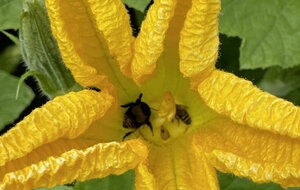
POLLINATOR: A bee inside a flower
NATURE – and the art of reproduction – is being given a helping hand in Co Armagh in a unique initiative where farmers are being assisted to track pollinators to maintain quality of produce and improve crop yields.
Retailer M&S is teaming up with agri-tech start-up AgriSound to provide in-field noise sensor technology to boost pollinator activity.
More than 70 per cent of the world’s food crops grown for human consumption rely on pollinators for sustained production, yield and quality.
And one of 18 sites across the UK chosen for the experiment is Gilpin Farms in Armagh, where sensors will be placed in its pumpkin patches.
Two in-field sensor trials were launched last year to help farmers better support pollinators like bumblebees and increase crop yields.
AgriSound technology allows farmers to track the number of pollinators visiting their farm in real-time and target specific interventions, like differing wildflower densities, for improving numbers and yields and quality of crops.
Now the technology is being scaled up across the UK to cover a diverse range of M&S’s fruit, veg and salad farms, with monitors covering 120 habitats and more than 1,000 hectares.
The technology will provide growers like Gilpins – which supplies M&S with carrots, leeks, pumpkins and Brussels sprouts – with access to real-time data and insights to help set their farms up to be more nature friendly.
Richard Gilpin, head of operations at Gilpin Farms, said: “The technology will be invaluable to help us monitor the pollinator activity across the whole farm, but particularly in the pumpkin crops.
“We currently bring in over 100 hives of bumble bees and honey bees to aid the pollination of the pumpkins, and the AgriSound technology will monitor how effective this is and also help us to make informed decisions about further interventions.
“We’re delighted to have been selected by M&S as one of the locations for this expansion and are excited to see what beneficial outcomes can be achieved by these relatively simple measures.
“If we can attract more pollinators to our farm, this will be a huge success.”
Andrew Clappen, technical director at M&S Food, added: “Improving biodiversity is at the forefront of our plans to help farmers become more resilient to the impact of climate change.
“Pollinators are the unsung heroes of farming – helping to improve yields and quality while benefitting the wider environment.”
We are here to share current happenings in the bee industry. Bee Culture gathers and shares articles published by outside sources. For more information about this specific article, please visit the original publish source: How technology is giving nature – and pollinators – a helping hand in Armagh – The Irish News
]]>By: Gard W. Otis
The Yellow-legged Hornet, Vespa velutina, has been discovered in the state of Georgia! This social wasp, native to Asia, preys extensively on honey bees and other pollinators. Its arrival in North America, while not wholly unexpected, is a cause for alarm for beekeepers and agriculture in general. What is this wasp? Why is it a concern? What can we do to control it? And how concerned should we be at this time?
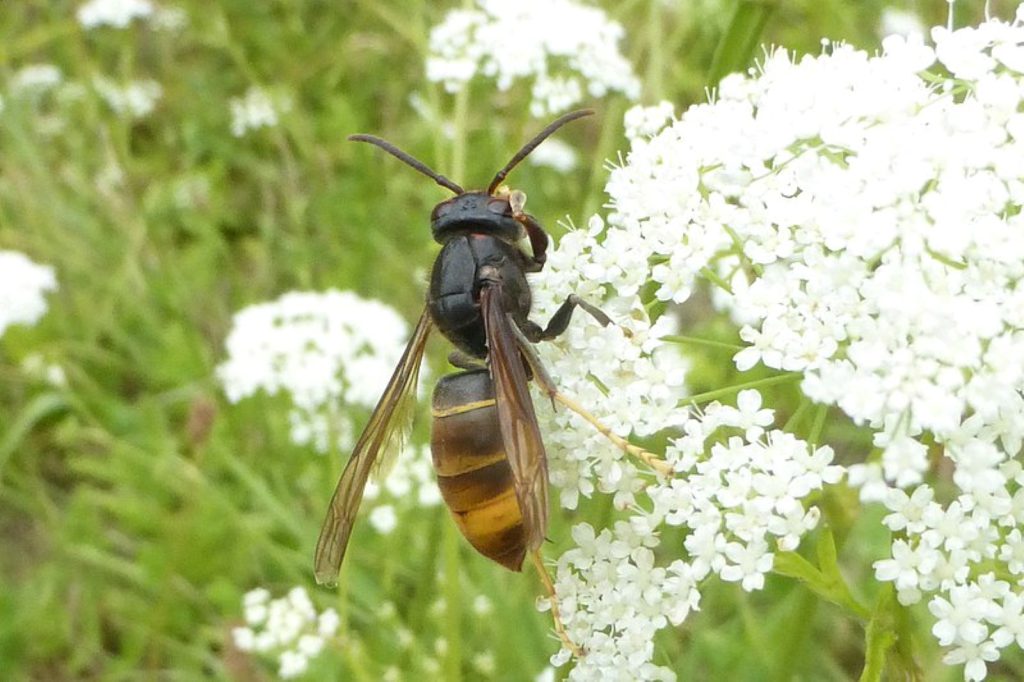
Figure 1. Yellow-legged Hornet, Vespa velutina, at rest. Photo taken in France, courtesy of Patrick Le Mao
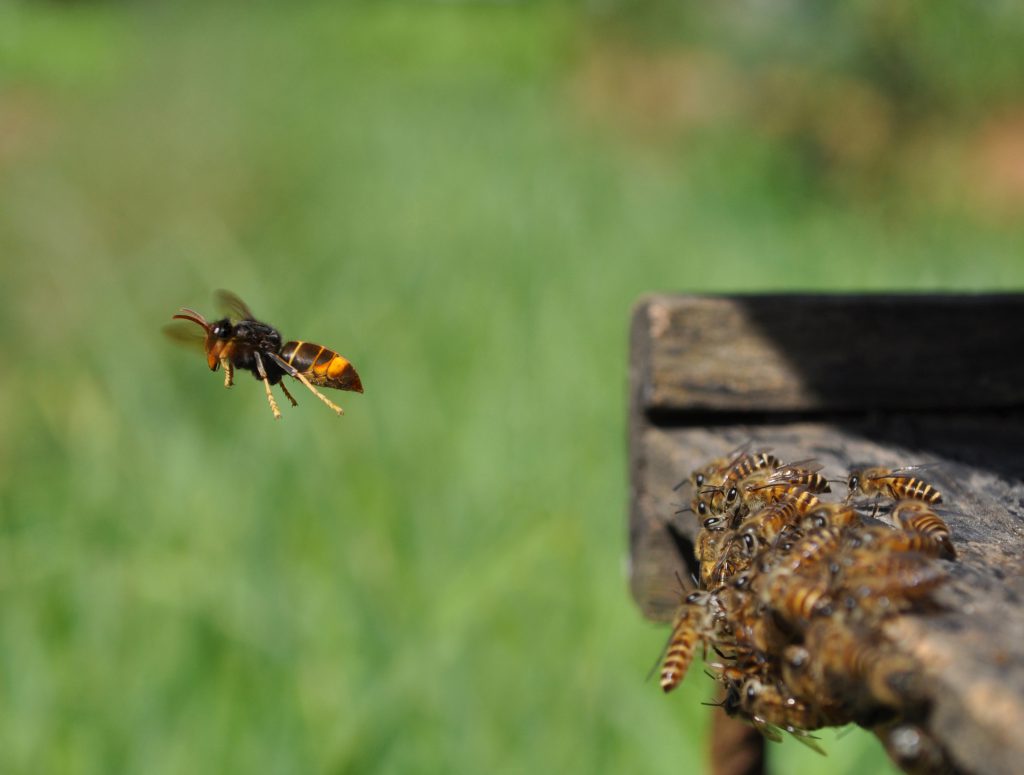
Figure 1. A Yellow-legged Hornet hovers in front of a hive, awaiting incoming forager bees. Photos taken in France, courtesy of Quentin Rome / Muséum national d’Histoire naturelle, Paris, France.
V. velutina is a large wasp, approximately 0.7–1.0 inch (1.7–2.5 cm) in length and with distinctive yellow legs (Fig. 1). It is a social insect, with colonies composed of numerous workers and a slightly larger queen (Pérez-de-Heredia et al., 2017). The species has been studied extensively, both within its native range and in the regions of western Europe, South Korea and Japan it has invaded. Its colonies, founded by a single mated queen, become more populous as Summer progresses. By late Summer, its large, round papery nests, usually concealed by leaves in tree-tops, contain hundreds of worker hornets. To feed their larvae, they capture a wide variety of insects, with the Western Honey Bee (Apis mellifera) being a favored prey species, in part because stationary honey bee colonies provide food consistently for weeks on end (Fig. 1; Roy, 2023). Laurino et al. (2020) provided a review of the biology of the species and its invasion of Europe, where programs to control the species cost millions of dollars annually.
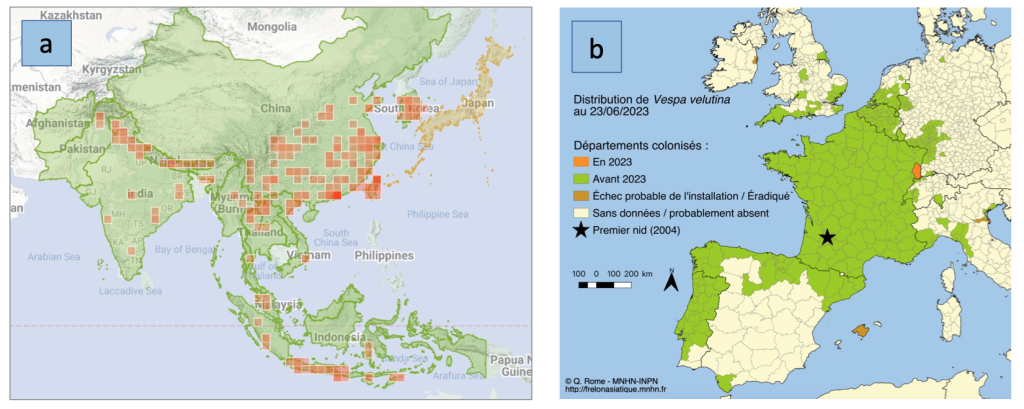
Figure 2. Distribution of V. veluntina (a) in Asia where it occurs naturally and has been introduced to South Korea and Japan, and (b) in Europe where it has been introduced. The red dot indicates where the first hornets were discovered in 2004. (Maps from (a) iNaturalist.org and (b) INPN (2023), used with permission of Quentin Rome / MNHN
Vespa velutina naturally inhabits a region that extends from northern China south through Indonesia and Southeast Asia, and westward along the foothills of the Himalayas to Afghanistan (Fig. 2a). Over that range, it occurs in 13 different color forms (formerly referred to as subspecies). It is likely that the hornets in Georgia are of the northern mainland form, V. velutina nigrothorax, that has also invaded Europe (Fig. 2b) and northeastern Asia. V. v. nigrothorax has often been inappropriately referred to in much of the literature written about it as the “Asian hornet”, a misnomer given that all 22 species of hornets inhabit some part of Asia!
The life cycle of the Yellow-legged Hornet is generally the same as that of all species of hornets (i.e., wasps in the genus Vespa) in temperate climates (Laurino et al., 2020). A mated queen emerges from her wintering site and becomes active in Spring when the weather becomes suitable. After a period of feeding on floral nectar and tree sap, followed by dispersal estimated to exceed 30 miles (50 km) in some instances, she individually constructs a small comb enclosed within a papery envelope made from plant fibers she chews and mixes with her saliva. The queen then rears the first generation of hornets by herself in an “embryo nest.” When those first workers have completed their development and emerge as adults, they take over most colony activities (nest construction, brood care, foraging and colony defense) while the queen continues to lay most, if not all, eggs. Towards Fall, the colony rears new queens and males. Those new queens mate with males, search for a wintering site that is usually in soil, leaf litter or rotten wood, and become quiescent for several months while temperatures are too cool for activity. It is while they are in Winter diapause that the queens can be accidentally transported long distances as stowaways among cargo on ships and, less frequently, on planes. This is almost certainly how Yellow-legged Hornets arrived in Georgia: the sites where the first individuals were discovered are within 12 miles of the Port of Savannah, one of the largest shipping ports in North America that receives cargo from everywhere in the world.
One important difference between the Yellow-legged Hornet and other species is the relatively large number of males with which young queens mate. The majority of hornet species that have been studied, mate with one or sometimes two males. In contrast, V. velutina queens mate with three males on average (range from one to 5+). The invasion of Europe by this species is believed to have originated from a single queen, mated with four males, that was accidentally imported to southwestern France (Fig. 2b). The added genetic variability provided by mating with several males has undoubtedly contributed to its successful invasions (reviewed by Otis et al., 2023).
Vespa velutina colonies can become very large. Quentin Rome and his colleagues (2015) collected nests in southwestern France from June to November and quantified their populations of immature and adult hornets. The colonies, generally initiated in March, had an average of 440 worker hornets by late October and early November. Some of those nests remained very small, but the most populous colony had 1,740 workers (News reports that colonies may contain 6,000 or more workers are erroneous). Mature colonies in Fall contained an average of 190 new queens (Rome et al., 2015), but because young queens only remain in their nest for about two weeks, that number must represent only a portion of all queens reared. I estimate that the average number reared is approximately 300–400 per colony. The greatest number of new queens collected inside one single nest was 463.
In an odd quirk of biology, hornet larvae serve as reservoirs of food within their colony. Larvae convert the proteins in chewed-up insect prey collected by worker hornets into amino-acid rich sugars. They then feed those secretions to young queens, resulting in them increasing in weight by 20–40% within one to two weeks of emergence as adults due to deposition of fat that fuels their survival during several months of Winter diapause. Young males also require the nutrients provided by larvae in order to mature sexually. Because hornets do not store honey in their nests, the sugary secretions from larvae also sustain their colonies during periods of inclement weather when foraging is not possible (reviewed by Otis et al. 2023).
How does the Yellow-legged Hornet affect honey bees and other pollinators?
The greatest concern related to the establishment of Yellow-legged Hornets in North America is their effects on honey bees and other pollinators. These hornets capture a wide variety of flying insects, a high percentage of which are pollinators, to feed to their larvae. Honey bees in particular are heavily preyed upon. Hornets hover near a hive entrance, facing outwards, so they can pick off incoming foragers (Fig. 1). Once a hive has been located, a hornet can return repeatedly to prey upon the essentially defenseless honey bees. Dr. Yves Le Conte, former head of the French honey bee research unit in Avignon, told me that by late Summer, when honey bees colonies should “prepare good Winter bees and collect honey for Winter survival, the hornets put pressure on the bees.” Hornets seem to focus on weaker colonies and in some cases, once they have killed most of the bees in a hive, they may enter and eat both the brood and the honey. In addition to the constant attrition of foraging bees, the presence of multiple hornets at the entrance of a colony causes “foraging paralysis” in extreme cases, flight activity is completely suppressed. The reduced foraging results in low honey stores and Winter starvation, with losses of 30–50% often reported (Yves Le Conte, pers. comm.; Requier et al., 2019). This hornet is a very significant threat to honey bees!
What has happened in Georgia in 2023?
From the information I have been able to obtain, Yellow-legged Hornets were first observed on or before August 1st by Sarah Beth Waller (personal communication), the beekeeper at the Savannah Bee Company on the eastern edge of Savannah where they were feeding on fallen pears. She posted a photo to iNaturalist on August 7th that yielded a tentative identification of the hornet as Vespa velutina (iNaturalist, 2023). Also in early August, a beekeeper somewhere in Savannah (at a date and location that have yet to be revealed by the Georgia Department of Agriculture) collected two hornets as they visited his hives. They were identified first by a University of Georgia entomologist and subsequently confirmed by the USDA on August 9th (GDA, 2023a). Thanks to news reports on August 15th about this discovery, a homeowner in the vicinity of the Savannah Bee Company reported a large nest 75 feet up in a pine tree. That nest, destroyed on the evening of August 23rd, proved to be exceptionally large (GDA 2023a, b). Keith Delaplane (University of Georgia) informed me that hornet traps of an unknown type have been deployed by the GDA from Port Wentworth to the mouth of the Savannah River, a distance of 18 miles. One person I interviewed was of the understanding that the first two locations where the hornets were observed are approximately eight miles apart, which, if true, would suggest that additional colonies may be present (hornets usually forage within a mile of their nest). Hornets have been sent for genetic analysis to determine if they originated in Europe or Asia. The situation in Savannah is fluid and changing rapidly. By the time this article is published, much more will be known and divulged. It may take a year or more before we know whether this incipient infestation has been eradicated.
What can be done to reduce the threat posed by the Yellow-legged Hornet?
Traps of many designs have been developed and tested in Europe. They have proven moderately effective for monitoring the presence of the hornet, but do not catch sufficient hornets to appreciably affect established colonies. Moreover, they have been criticized for their extensive by-catch of non-target insects. If the traps that have been deployed in Georgia capture additional hornets, finding and destroying their nests before new queens disperse into the environment presents the greatest probability of successful eradication. As an example, in spite of repeated discovery of Yellow-legged Hornet colonies in southern England, coordinated efforts of agricultural personnel, beekeepers and scientists have so far been successful at preventing the wasp’s establishment in the United Kingdom (Jones et al., 2020). On the Mediterranean island of Mallorca, the combination of Spring trapping of gynes before they establish nests, baiting for foragers, and triangulating and destroying colonies before they produce new queens, eliminated the initial infestation. There have been some successes in using very light-weight radio transmitters to track Vespa hornets to their nests (Kennedy et al., 2018; Looney et al. 2023). After a few years, however, once a population of hornets has become established, the proportion of nests that can be found and destroyed has proven in several European countries, to be insufficient to control the invasion.
Monitoring by state departments of agriculture (e.g., see the online form set up for reporting in Georgia; GDA 2023a) or through community-scientist platforms such as iNaturalist can provide accurate reporting of exotic hornets and other pests. Beekeepers can play a huge role in early detection of non-native hornets because several species that have the potential to become established in North America prey extensively on honey bees. Any wasp that seems unusual can be photographed or caught in a jar, then compared with similar species (USDA-APHIS, 2023). It should be reported if you suspect it is V. velutina or another non-native species.
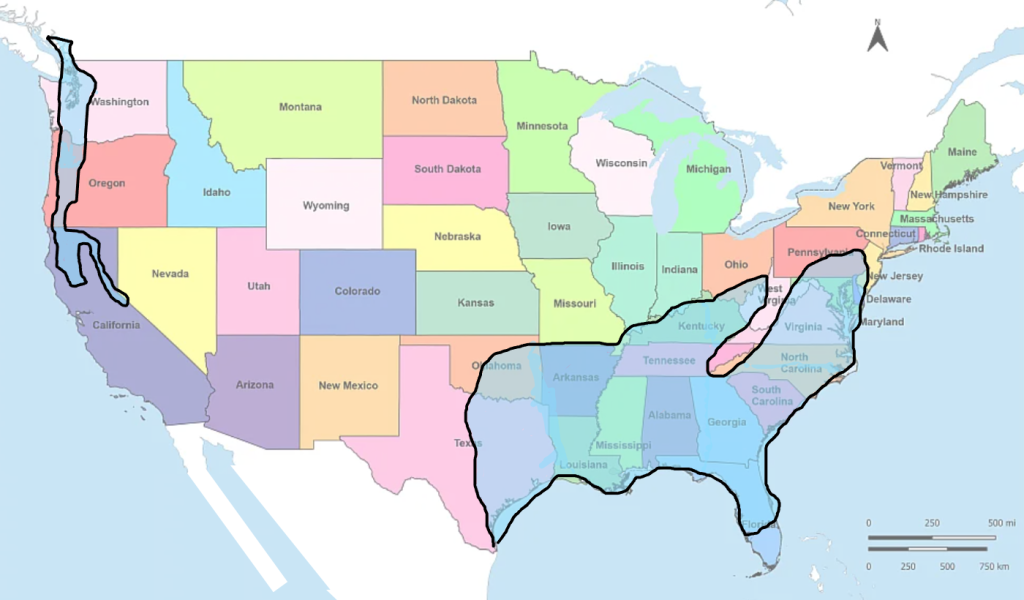
Figure 3. Regions of North America with climate well suited to Yellow-legged Hornet survival. Other regions with lower climate suitability not shown. Adapted from Villemany et al. (2011).
Where is the Yellow-legged Hornet likely to survive in North America?
GIS technology coupled with climate data for localities throughout the world that are available online have revolutionized our ability to predict potential distributions of species outside of their native ranges. In the case of the Yellow-legged Hornet, climate variables from where the species has been documented in Asia as well as in its introduced range in France, were analyzed along with climate data for sites throughout the rest of the world. A map showing the probability of suitable climate for hornet survival was created (Villemant et al., 2011). I superimposed the North American portion of that map onto a map of the United States, then modified it to show the approximate regions in North America where Vespa velutina would almost certainly be able to survive and reproduce (Fig. 3).
A large area of southeastern USA is predicted to have climate suitable for V. velutina. That region extends from the southern tip of Texas north into Oklahoma, then eastwards to somewhere between Baltimore and New York (Fig. 3.). Hornet survival may even be possible as far north as Boston and southern Ontario (Villemant et al., 2011). On the west coast, there is a zone in the rain shadow of the coastal mountains, from Vancouver, Canada, south into California, that seems prone to invasion. The hornet is likely to do better where the minimum temperature in Winter is not too cold, relative humidity is fairly high and the maximum temperature in Summer is not too hot.
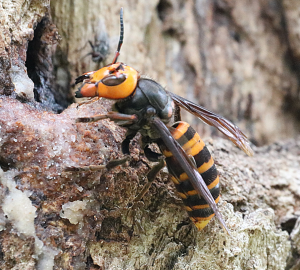
Figure 4. The Northern Japanese Hornet, Vespa mandarinia, a species that invaded the Pacific Northwest in 2019. Photo taken by Aline Horikawa near Kyoto, Japan, and used with her permission.
What about other exotic species of hornets?
Who can forget the “invasion by murder hornets” in 2019–2021? The Northern Giant Hornet (formerly known as the Asian Giant Hornet), Vespa mandarinia, is a huge social hornet (Fig. 4; also, refer to the image within YLH lookalikes” in USDA-APHIS, 2023) that is infamous for its ability to rapidly slaughter entire colonies of Apis mellifera. Its discovery in Fall of 2019 led to an extensive monitoring and eradication effort that is on-going in Washington state and British Columbia. Following a peak of 35 sightings and specimens in 2020, there were only 10 reports in 2021 (Looney et al., 2023). Since then, there have been no Northern Giant Hornets detected in North America, and there is optimism that the introduction of this species has failed. It is not clear what combination of factors is responsible for the decline in its population: relatively unsuitable climate, low genetic diversity, destruction of nests (one in British Columbia, four in Washington state; Looney et al. 2023) or other factors. It is known that relatively few species that reach foreign lands are successful in establishing permanent populations. We may simply have gotten lucky with the recent Northern Giant Hornet introduction.
Several groups of researchers have modeled the potential distribution of V. mandarinia. All of them yielded a strong probability of it surviving in the Pacific Northwest where it was initially discovered as well as a large region of eastern North America; however, these models fail to agree on the regions in the east that are most prone to invasion. Because this species focuses its predation in late Summer and Fall on social insects, including honey bees, beekeepers are again the group most likely to encounter it. If you see any wasp attacking and killing honey bees, you should report it immediately.
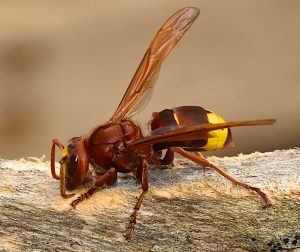
Figure 5. The Oriental Hornet, Vespa orientalis, a demonstrated invader in northern Italy, southern France, Sardinia, southern Spain, eastern Europe and Chile. Photo taken by Nicola Addelfio near Palermo, Sicily, Italy, and used with her permission.
The Oriental Hornet (Vespa orientalis: Fig 5.), naturally inhabits the Mediterranean, Middle Eastern and western Asian countries and is the only hornet species adapted to hot, arid climates. This striking reddish brown hornet is an agricultural pest that attacks honey bee colonies and damages fleshy fruits such as grapes. It has already been detected in at least 10 countries outside of its native range (reviewed by Otis et al., 2023), and has successfully colonized southern Spain and Chile. Young queens often Winter in groups (Eran Levin, pers. comm.), a behavior which may have helped it to overcome genetic bottlenecks. Species distribution modeling suggests it has a high probability of successfully colonizing the Gulf Coast region of the United States as well as central California.
I would be remiss not to mention the European Hornet, also a large wasp that could be mistaken for one of the other species mentioned (USDA-APHIS, 2023). It was accidentally introduced to New York City nearly 180 years ago and has become relatively common in much of Eastern North America, but because it rarely captures honey bees and has relatively small colonies, it has not proven to be a concern for beekeeping.
Conclusion
Several hornet species cause extensive damage to honey bee colonies in other parts of the world. Unlike Varroa mites and small hive beetles, hornets do not inhabit bee colonies and would be very unlikely to be transported with hives when they are moved for pollination. However, they do have the potential to arrive at any port and subsequently be transported by trucks and trains anywhere in North America! The establishment of any of the exotic hornets discussed before would cause extensive disruption to beekeeping due to their predation on bees and secondary effects on Winter colony survival. The propensity of these hornets to attack honey bees makes beekeepers the most likely people to encounter them, as demonstrated recently with the detection of the Yellow-legged Hornet in Georgia. Readers are encouraged to learn how to identify them: review the figures in this article and “lookalikes” in USDA-APHIS (2023). Stay vigilant—and let’s hope that we remain “hornet-free” for many years to come.
Acknowledgments
I am indebted to Lien T.P. Nguyen of Vietnam and Heather Mattila of Wellesley College, MA, my hornet research collaborators, for the knowledge and experiences they have shared with me over the past decade. Staff at the University of Georgia, K. Cecelia Sequira of USDA-APHIS, and Sarah Beth Waller shared important information about the Yellow-legged Hornet detection in Georgia up until 27 August, 2023. I must also recognize the dozens of wasp biologists worldwide who have willingly answered my many naive questions about hornets.
Gard W. Otis
School of Environmental Sciences, University of Guelph, Ontario, Canada
Institute of Bee Health, University of Bern and Agroscope, Bern, Switzerland
Selected References
GDA (2023a). Georgia Department of Agriculture press release (Aug. 25, 2023). https://agr.georgia.gov/pr/yellow-legged-hornet-nest-eradicated-savannah-area
GDA (2023b) Georgia Department of Agriculture press conference (Aug. 25, 2023). https://www.facebook.com/watch/live/?ref=watch_permalink&v=639982398259487
iNaturalist (2023). Yellow-legged Hornet (Vespa velutina). https://www.inaturalist.org/taxa/119019-Vespa-velutina
INPN (2020). Le frailon asiatique, Vespa velutina. (The Asian Hornet, Vespa velutina). Inventarie National du Patrimoine Naturel. (http://frelonasiatique.mnhn.fr/)
Jones E.P., C. Conyers, V. Tomkies, et al. Managing incursions of Vespa velutina nigrithorax in the UK: an emerging threat to apiculture. Scientific Reports (2020) 10:19553. doi: 10.1038/s41598-020-76690-2
Kennedy P.J., S.M. Ford, J. Poidatz, et al. (2018). Searching for nests of the invasive Asian hornet (Vespa velutina) using radiotelemetry. Communications Biology 1: 88. doi: 10.1038/s42003-018-0092-9
Laurino D, S. Lioy, L. Carisio, et al. (2020). Vespa velutina: an alien driver of honey bee colony losses. Diversity (2020) 12: 1–15. doi:10.3390/d12010005
Looney, C, B. Carman, J. Cena, et al. (2023) Detection and description of four Vespa mandarinia (Hymenoptera: Vespidae) nests collected in Washington State, USA. Journal of Hymenoptera Research 96: 1–20. https://doi.org/10.3897/jhr.96.99307
Otis, G.W., B.A. Taylor, and H.R. Mattila (2023). Invasion potential of hornets (Hymenoptera: Vespidae: Vespa spp.). Frontiers in Insect Science 3: 1145158. https://doi.org/10.3389/finsc.2023.1145158
Pérez-de-Heredia, I, E. Darrouzet, A. Goldarazena, et al. (2017). Differentiating between gynes and workers in the invasive hornet Vespa velutina (Hymenoptera, Vespidae) in Europe. Journal of Hymenoptera Research 60: 119–133. https://doi.org/10.3897/jhr.60.13505
Requier, F., Q. Rome, G. Chiron, et al. (1019), Predation of the invasive Asian hornet affects foraging activity and survival probability of honey bees in Western Europe. Journal of Pest Science 92: 567–578.
Rome, Q., F.J. Muller, A. Touret-Alby, et al. (2015). Caste differentiation and seasonal changes in Vespa velutina (Hym.: Vespidae) colonies in its introduced range. Journal of Applied Entomology 139: 771–782. https://doi.org/10.1111/jen.12210
Roy, H. (2023). BBC. Asian hornet guide. https://www.discoverwildlife.com/animal-facts/insects-invertebrates/asian-hornets-guide/
USDA-APHIS (2023). Yellow-legged Hornet. https://www.aphis.usda.gov/aphis/ourfocus/planthealth/plant-pest-and-disease-programs/honey-bees/yellow-legged-hornet (accessed 25 August, 2023).
Villemant C., M. Barbet-Massin, A. Perrard, et al. (2011). Predicting the invasion risk by the alien bee-hawking yellow-legged hornet Vespa velutina nigrithorax across Europe and other continents with niche models. Biological Conservation 144: 2142–50. doi: 10.1016/j.biocon.2011.04.009
By Maiya Fleck
MANDAN, N.D. (KFYR) – For 18 consecutive years, North Dakota has ranked first in the nation for honey production, according to the USDA.
Though they are small in size, bees play a big role in food production, but populations are at risk.
These busy bees play a larger role than some might think. Honey bees are a vital part of our lives, and without them, the North Dakota economy, food production, and commercial goods would suffer.
Beekeeper Jess Gifford works with a colony of people for his company “Who’s Your Honey” in Mandan. Gifford said he’s passionate about doing his part to keep this country well-fed.
“I was told the other day a cantaloupe needs to be pollinated 14 times. So that means 14 visits to each flower just to produce,” said Gifford.
The USDA says honey bees alone pollinate 80 percent of flowering plants like sunflowers and 130 different types of fruits and vegetables.
April Johnson, an extension pollinator technician at NDSU, said bee populations nationwide have been dwindling for multiple reasons including colony collapse disorder, varroa mite infestations and habitat loss. Moving bees around the country can impact their immune systems and diet changes.
The decline of hives is always a worry for beekeepers like Gifford. He moves his bees to Louisiana and California during the winter months.
“These viruses have been so detrimental to us. We used to take the bees, 50 years ago, we would just leave them here and wrap them in insulation,” said Gifford.
He said the bees also boost the North Dakota economy by bringing beekeepers to the state.
“Two and a half million hives roughly go to California, but here there are eight hundred and some thousand hives, we are told by the state. They come here for the honey production and pollination, and we need the honey,” said Gifford.
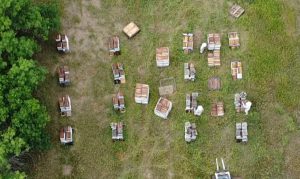
Bees at ‘Who’s Your Honey’ in Mandan(KFYR-TV)
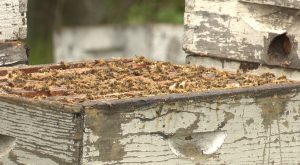
Beekeepers like Gifford have adapted and after two bad years, he feels 2023 is going to be a good year for production.
After the bees do their work on the prairie, he brings them back to the shop to collect honey and wax.
He uses the bees for honey, beeswax, pollen and also as pollinators in California.
North Dakota beekeepers produced 28.3 million pounds of honey in 2021, according to the USDA. There are many nationwide efforts for people to preserve bee populations like SaveTheBees.com.
We are here to share current happenings in the bee industry. Bee Culture gathers and shares articles published by outside sources. For more information about this specific article, please visit the original publish source: North Dakota honey bees are ‘buzzy’ playing a big role (kfyrtv.com)
]]>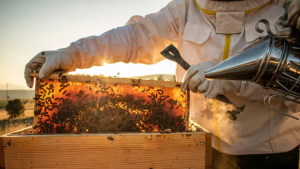
Honey bees are invaluable both for biodiversity and agriculture as they are excellent pollinators, yet their numbers worldwide have been dropping dramatically. The causes include climate change, habitat loss, pesticide use and diseases.
It is in this latter category of threats that entomologists from the University of Florida, the Agricultural Research Service-USDA, Louisiana State University and the University of Nebraska-Lincoln have made marked progress. They have done so by prompting honey bees’ cells to produce free radicals for protecting the insects against a range of potentially deadly viruses.
In field studies researchers used a compound called pinacidil to alter potassium ion channels, a protein found in the cells of bees’ and other iving things. Altering these channels produced slightly more free radicals, they explain.
The scientists gave the drug to honey bee colonies by mixing it into sugar water and drizzling it over their honey comb at night. The bees consumed the sugar water and also fed it to their young, thereby spreading the drug throughout the colony.
The treatment protected bees from six viruses that take their toll on honey bee colonies: Israeli acute paralysis virus, deformed wing viruses A and B, black queen cell virus, and Lake Sinai viruses 1 and 2.
“This approach is especially exciting because it doesn’t just target a specific type of virus but helps with many different viruses,” stresses Daniel Swale, an associate professor in the UF/IFAS entomology and nematology department.
“Additionally, we demonstrated that our treatment works both in the lab and in colonies that each contain 80,000 bees in the field,” he adds. “This is huge because in a hive setting bees are exposed to so many different viruses and stressors, so successfully controlling viruses in that environment is very encouraging.”
While viruses are not the greatest cause of deaths among bees, they can contribute significantly, according to the experts.
“Varroa mites are the number one cause of honey bee losses, but it’s important to point out that varroa mites, aside from physically weakening bees, also transmit viruses to bees. If we can mitigate viruses in honey bee colonies, that would be a big step forward,” says Michael Simone-Finstrom, a research molecular biologist with the ARS Honey Bee Breeding, Genetics, and Physiology Research Lab in Baton Rouge, Louisiana.
In their study the researchers also showed that pinacidil helped more bees survive in colonies infested with varroa mites.
Administering the drug to commercial honey bee hives may work only for some beekeepers as it is fairly expensive. However, this research shows the way in developing other drugs that cost less.
“One of the big take-aways from this study is that potassium ion channels can be a target for improving immune system function in honey bees and possibly other insects. We would like to find a molecule, such as a peptide, or a new technology that has the same effect as pinacidil but is more accessible to beekeepers,” Swale says.
We are here to share current happenings in the bee industry. Bee Culture gathers and shares articles published by outside sources. For more information about this specific article, please visit the original publish source: Scientists Develop a Drug to Protect Honey Bees from Viruses – The Good Men Project
]]>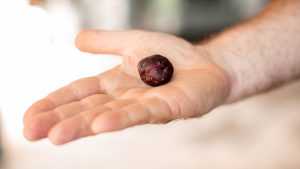
Propolis is a sticky resinous substance found in bee hives.
Beekeepers look to untapped potential of propolis, or ‘bee glue’, as alternative revenue stream
A by-product of honey production largely discarded in Australia could provide an alternative income source for beekeepers across the country.
Hidden within the walls of their hives, bees blend up a unique mix of materials that scientists believe holds untapped potential in Australia.
Propolis is a sticky, resinous substance that’s sometimes referred to as “bee glue”.
Bees use propolis as a powerful sterilising agent as well as to seal gaps in their hives against predators and the elements.
‘Propolis is used by the bees because they don’t have an immune system,” Queensland beekeeper Murray Arkadieff said.
“Bees forage within a 7 kilometre radius of the beehive, so that means they cover about 210km²,” he said.

Murray Arkadieff has been a beekeeper his entire life.
Mr Arkadieff said the bees were able to look throughout that 210km² and search for parts of plants that could be used to polish their hives.
The bees not only forage for nectar and pollen, but also for other parts of the natural environment such as sap or bark.
“They bring that back to the beehive and they can mix it all together and it turns it into a really strong antimicrobial, anti-fungal, antiviral and antibacterial material, which they polish their entire hive with,” he said.
Propolis and its medicinal wonders
Propolis also has benefits for people and is used in many different countries in medicines, dietary supplements, and cosmetics.
“Propolis contains high polyphenolic compounds,” organic chemist from the University of the Sunshine Coast Trong Tran said.
“Australian propolis is very diverse and it also shows very comparable, even higher antioxidant activities compared with the other well-known propolis in the world, Dr Tran said”
Despite being part of a well-established industry elsewhere, in Australia there isn’t large-scale commercial propolis harvesting and processing.
“We’ve always mainly been focused on liquid honey production,” Mr Arkadieff said.
“It’s not something that Australians have looked into in a massive way, which is why it’s such an exciting opportunity for the industry.”
Peter Brooks is part of the research team from the University of the Sunshine Coast that has been part of the Australian Propolis Project, an initiative supported by the federal government’s Agrifutures organisation.
“When we started talking to beekeepers about what they were interested in they were saying: ‘Well this propolis product that they throw out, it’s got a lot of value, so how could we use that in some of our research?” Dr Brooks said.
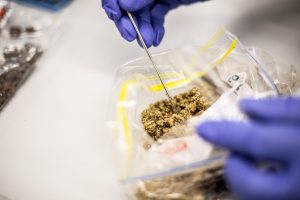
Samples of propolis were collected from different areas around the country and were sent to the lab to be analysed.
“Like everything, if you’re throwing something away that you could be making money for — it could be a new source of income.”
To begin with, scientists needed to ensure that Australian propolis was valuable, given its specific properties were largely unknown.
A buzzing opportunity for beekeepers
Hive and Wellness Australia, formerly known as Capilano, asked its 1,200 beekeepers nationally to consider participating in a trial collection of propolis.
Samples collected from all over the country were sent to the University of the Sunshine Coast for analysis.
“Of those samples that came back I think there was around 55 per cent that showed high antioxidant compounds,” said Jessica Berry, an industry liaison officer with Hive and Wellness Australia.
Dr Tran leads the research team, which is focused on finding out which samples hold the higher antioxidant value, and why.
He thinks one reason might be that about 80 per cent of Australia’s plants are endemic, and so aren’t found anywhere else.
“So we can expect that Australian propolis is unique to other areas in the world,” he said.
The complete article can be found at; https://www.abc.net.au/news/2023-07-23/australian-beehives-propolis-alternative-revenue-for-beekeepers/102625256o
We are here to share current happenings in the bee industry. Bee Culture gathers and shares articles published by outside sources. For more information about this specific article, please visit the original publish source: https://www.abc.net.au/news/2023-07-23/australian-beehives-propolis-alternative-revenue-for-beekeepers/102625256o
]]>Written by Jackie DiBartolomeo
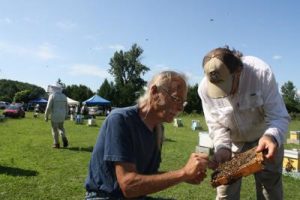
Mike Palmer searches for a queen bee with a partygoer July 19 in St. Albans. Jackie DiBartolomeo
FRANKLIN COUNTY — In a sunny field just off Kellogg Road in St. Albans, a group of 25 stood wearing an assortment of nets and hats. In their hands and swirling in the air around them were hundreds of bees.
The group gathered Wednesday morning to celebrate local and world-renowned beekeeper Mike Palmer. After buying his first two packs of bees back in 1974, Palmer is now in his 50th year of beekeeping. Over the decades, Palmer has become known internationally for his beekeeping methods with his brood of over 1,000 bee colonies.
Instead of gathering in a party hall to celebrate Palmer’s accomplishments, the group of beekeepers gathered in the place they and Palmer love best: a grassy field surrounded by the little yellow creatures that brought them all together in the first place.
When Palmer pulled up to the field to find 25 people waiting for him instead of the usual four or five, he was surprised and overwhelmed by the support.
“It means everything,” Palmer said. “It doesn’t feel like 50 years.”
Stationed at the 30-some hives placed throughout the field, partygoers took to searching for queen bees among the sticky honey and the dozens of bees attached to each frame.
With each queen found, the beekeepers carried her over to Palmer. Holding the queen in his hand with ease, Palmer took a dot of red paint to label her and put her in her own box, a throne of sorts. Guests watched on with each queen Palmer labeled, admiring his deftness with the small creatures.
Of the 1,200-some queen bees Palmer raises every summer, he sells half of them to beekeepers nationwide.
“This is my favorite thing to do…it’s nice to make nice honey, but it’s so much nicer to make nice queens and to send them all over the country,” Palmer said. “People write back, they call me on the phone; that, to me, is the reward.”
Guests at the party ranged from beekeepers who have been involved in the practice for decades, to amateurs. Yet with one guest qualifying herself as an “amateur” with eight years of experience, it is clear that learning is never really over in the beekeeping world…..
To read the Complete article go to; Local beekeepers catch queens for famed St. Albans beekeeper Mike Palmer’s 50th anniversary | Local News | samessenger.com
We are here to share current happenings in the bee industry. Bee Culture gathers and shares articles published by outside sources. For more information about this specific article, please visit the original publish source: Local beekeepers catch queens for famed St. Albans beekeeper Mike Palmer’s 50th anniversary | Local News | samessenger.com
]]> European foulbrood office hours webinar
European foulbrood office hours webinar
October 12, 2023 7:00PM – 8:30PM
This free webinar will be hosted on zoom. Register in advance. https://www.canr.msu.edu/events/european-foulbrood-office-hours-webinar
In this free evening webinar for beekeepers, Michigan State University honey bee disease experts will cover information on the honey bee disease European foulbrood (EFB). Dr. Meghan Milbrath and Dr. Peter Fowler will give a brief overview on how to recognize signs of this disease, perform diagnostic tests, and provide recommendations on what to do if you find it in your bee yard. We will highlight some recent research and give plenty of time for examples and questions.
https://www.canr.msu.edu/events/european-foulbrood-office-hours-webinar
The webinar will be recorded and posted on Michigan State University Beekeeping You Tube Channel: https://www.youtube.com/channel/UCD7AYI-MRu_3mp3oRW1kWVw/videos
When: Oct 12, 2023 19:00 Eastern Time (US and Canada)
Topic: European foulbrood Office Hours
Register in advance for this free webinar
Meghan Milbrath, MPH, PhD
517-884-9518
]]>Click Here if you listened. We’re trying to gauge interest so only one question is required; however, there is a spot for feedback!
Read along below!
 The Quiet Evolution of Apiary Mowing
The Quiet Evolution of Apiary Mowing
A Necessary Aspect of Apiary Management
By: James E. Tew
My First Real Job
When I was a young teenager, a friend and I would push our mowers around the community and offer to cut grass. We generally earned somewhere between $1.75-2.50 per yard total. We had to split the earnings. The mowers were not self-propelled. Consequently, as young entrepreneurs, we never had a body weight problem.
We developed a regular customer list and at our peak, we were cutting about twenty lawns per week. General expectations were that we cut in straight lines and tips were not offered. When we were thirsty, we drank water from faucets plumbed from the house. Dad provided the mower and the gas, but I was allowed to keep my earnings. Of course, he got his lawn cut for free.
To this day, I cut grass in bullet-straight lines, and I only mow when the lawn absolutely needs it. Now, throughout every Summer month, I marvel at the equipment that professional mowing services have and I compare all that modern equipment to the absolute minimal equipment that my friend and I used all those years ago. Times change, don’t they?
Before Gasoline Mowers
Before gasoline mowers became widely available, lawns were cut using various manual methods and tools. The common methods used for lawn maintenance before gasoline mowers were scythes, sickles, weed slings, grazing animals, manual push mowers and scissors. None of these options were feasible without manual labor. Even grazing animals required fence installation. The invention of gasoline-powered mowers modernized lawn care and made it much more efficient and accessible for homeowners, landscapers and even beekeepers.
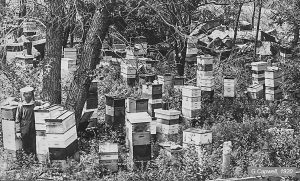
Figure 1. A Kansas beeyard in 1920. Note beekeeper in the lower left of the photo who is wearing a vintage Alexander veil and gauntlet gloves.
What Did this Mean for Apiaries?
It means that our apiaries, decades ago were weedier, and more unkempt by today’s standards. I cannot find information indicating that grazing animals were common methods for foliage management in pre-mower days. No doubt, cows, horses and sheep would occasionally knock over hives or scratch against them.
In the past, all apiary grass and weeds were cut manually requiring hot labor commitments. I’m old enough to remember life before string trimmers and herbicides. Everything was weedier then.
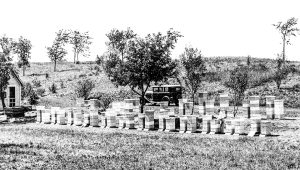
Figure 2. In 1922, in this Iowa beeyard, all grass was cut using manual methods. Gasoline mowers, of the day, were heavy and uncommon.
To Add to the Laborious Task
In years past, just as the present, protective bee gear was commonly worn when cutting and pruning near bee hives. Wearing protective equipment was just as clumsy now as it was years ago. The requirement to wear protective clothing has always made apiary weed control a hot, tiring job. Thankfully, modern protective equipment is better ventilated and more comfortable, but it is still hot work.
No-Mow May
Due to my early years of incessantly cutting grass, as a senior citizen, I am now a reluctant lawn mower. To the chagrin of my neighbors whose lawns are always neatly manicured, I only mow when I must. In this way, I avoid needless mowing sessions and my bees have access to the clover and dandelions in my lawn.
When I first heard of the concept, I readily embraced the notion of a “No-Mow May” in which we just give our lawns a month off from trimming. I quickly found out that a mow-less May lead me directly into a hellish June, with tall grass that frequently required raking after cutting. I had to go back to the lawn maintenance drawing board.
String Trimmers in the Apiary
I don’t remember the first time I used a string trimmer. With my mowing history that I touted before, that memory void seems strange to me. But I do know that a string trimmer became a necessary component of the equipment that always went with me to an outyard. String trimmers are now a common, if unexciting, beeyard management tool. What’s their story?
A Short History of String Trimmers
The history of string trimmers, also known as weed whackers, weed eaters or line trimmers, dates to the early 1970s. The concept of using a rotating nylon string to trim grass and weeds emerged as an alternative to traditional lawn mowers and manual cutting tools.
The concept of a rotating nylon line for cutting vegetation was developed in the late 1960s by George Ballas, a Houston-based entrepreneur. He got the idea while watching the revolving brushes at a car wash (I find this interesting. The common safety razor was envisioned after a visionary watched a woodworker use a common hand plane. The flail honey comb uncapper was conceptualized as another visionary watched the conveyor belt perform at a grocery store checkout. Shouldn’t we all be more observant?). In 1971, he received a patent for his invention, which consisted of a fishing reel with fishing line attached to the spool. Ballas’ invention was the foundation for the modern string trimmer.
In 1972, George Ballas partnered with Jim Goad, an engineer, to refine the design and create the first commercial string trimmer. They established the Weed Eater company and introduced the first gas-powered, handheld string trimmer to the market. This model quickly gained popularity due to its effectiveness in trimming grass and weeds in hard-to-reach areas.
In the late 1970s and early 1980s, electric string trimmers began to appear on the market. These models were lighter and quieter than their gas-powered counterparts, making them more appealing to homeowners with smaller yards.
Bees and Trimmers
No matter how useful power mowers and trimmers may be, on some mowing days, the bees seem to despise them. Most experienced beekeepers have seen this defensive behavior. In fact, common management recommendations warn the beekeeper to expect this attack. It is thought that the odors and vibrations from the mowers and trimmers agitate the bees.
In my own experience gained when trimming around hives, it seems that the bee response is greatest during Summer months when a nectar dearth has ended and the colonies are at full populations.
I have never used a battery-powered trimmer, but I am sure some of you have. I ask if you have noticed less of a response when using battery-powered mowers and trimmers? Does their quietness and lack of fumes have a more lenient effect on the colonies?
Beekeepers and Trimmers
At this moment, I have two, hand-held string trimmers. I have one modified with a cutting blade for heavy or tough growth. Brambles, such as multiflora rose, are a challenge for either type of cutting head.
Even though I frequently use them, I increasingly have issues with string trimmers. The evolving issue is that the older I become, my trimming sessions grow shorter and shorter. My shoulders ache. I get noise warnings from my Apple watch. I get hotter and hotter in the protective gear that I must wear. I simply can’t do the job the way I once could.
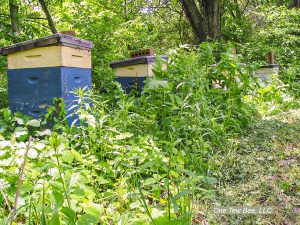
Figure 3. An apiary with uncontrolled grass growth.
Consequently, I have grown to dread the task more and more. All the while, the grass and weeds have continued to grow. Out of necessity, I developed a tolerant attitude of tall grasses and weeds in my apiary. I put my hives on firm hive stands that were twenty inches from the ground and I kept the entrance free of tall weeds. Even then, the grass and weeds in my beeyard continued to grow. My bees seemed unphased by the tall grass in the yards, but increasingly, it became apparent that this approach could not last. Why?
Two reasons that altered my laissez-faire system of yard maintenance evolved. The first reason was you, the reader of Bee Culture articles. Photos and videos that I captured in my apiary looked terrible. For instance, while I wanted to write about a new swarm that I just acquired, my photo of the new bee hive was marred by tall grass and the appearance of a generally unmanaged area. (If you have back issues of Bee Culture, you can readily see these photos.) I grew afraid that you, the reader, would not understand the bigger picture.
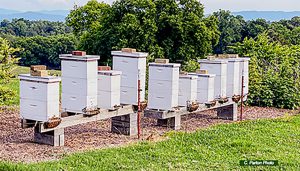
Figure 4. A manicured yard that uses herbicides, grazing animals and electric fencing to keeps foliage at bay. C. Parton Photo
Secondly, the tall weeds made it difficult for me walk while carrying a super of honey or other related bee equipment. Briars tugged at my suit. Tall grass made me stumble as I walked. Grass grew in and around my unused equipment. As with the No-Mow May scenario that I discussed earlier, I had to return to the drawing board. I was physically unable to trim my entire beeyard with a string trimmer and it was too much to ask of my 1972 Snapper push mower to systematically mow this tall grass.
A Heavy Duty, Walk-Behind Trimmer
I would occasionally see advertisements for various models of walk-behind trimmers. I asked around my circle of beekeeping friends, but no one had experience with these machines. I checked online. Yes, wheel kits were available for my string trimmers. In theory, I could modify my handheld trimmers to be mobile. Again, I asked around my circle of beekeeping friends, but no one had experience with these wheel kits either. All the while, the grass continued to grow. Would a trimmer on wheels allow me to work longer and more consistently?

Figure 5. A walk-behind Cord Trimmer.
In mid-July, with apiary grass higher than my knees, I broke. This situation in my apiary was unacceptable and was never going to get better. I went to an equipment dealer to buy a wheel kit. They did not have one, but they did have a single walk-behind trimmer on the showroom floor. It was $400. I bought it on the spot. It uses four .175” spiral cutting cords and cuts a twenty-two-inch swatch. It cuts at five heights – from 1.5” to 3.5”. I set it to the highest setting. The machine fairly easily chewed through the tall weeds leaving me with a somewhat rough-looking finished job, but the weeds were readily cut down.
The nose on the machine does a reasonably good job of getting beneath my hive stands – not perfect – but reasonably good. The cords are not cost free and they do wear out, but the machine aggressively took out tall weeds. It worked.
The major drawback is that I must still push the machine through tall grass. That requires old fashioned perspiration, but it’s still easier than using a handheld string unit. Please know that I am not selling these units. I’m only looking for a yard maintenance remedy.
For beekeepers younger than or more physically fit than I am, a typical string trimmer would get the job done. As I have written in previous articles, I’m at a stage of my beekeeping where I try to put wheels on everything. String trimmers were no exception. I should also say that while the bees didn’t go crazy, I still needed to wear light protective gear when using the machine.
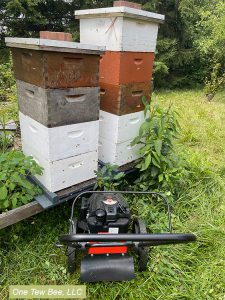
Figure 6. Weed whacking beneath hives.
Hot and Clumsy
This past July 2023 was the hottest July every recorded. Yet the grass kept growing. To keep the grass under control, grass-cutting beekeepers are hot, and clumsy, and are surrounded by irate bees. Can it get any worse? Yes, it can, at the same time, we are also using power mowing equipment. Occasionally, accidents happen. This is a beekeeper’s recent story.

Figure 7. Accidents happen quickly. Attacking bees can be distracting. Many of us have a story.
I got home from work and my wife wanted to cut the grass but she’d never used that particular riding mower. I changed out of my work boots into my Crocs and pulled the mower out of the garage for her. I decided to make a couple passes by my bee hives so my wife wouldn’t get stung.
My bees have never bothered me before. On the first pass, I had hundreds of bees come after me. They were stinging me so much that I was fearful I might have an allergic reaction. I quickly decided to jump off the riding mower and make a run for the house. My foot got caught in the pulley and belt on the mower deck. My croc stayed lodged in the mower belt while I ran into the house. When I got inside and got all the bees off me, I realized how badly my foot was hurt.
I went to the Emergency Room where they said it had broken my toe and cut a tendon. It almost cut my toe off. I had 12 stitches and had to wear a Draco shoe that keeps the weight on my heel and off my toe until my broken toe can heal.
Mowing is Not Beekeeping
Every apiary mowing situation is different but presently, we have an abundance of diversified mowing devices. That selection of devices does not mean that mowing is not hot, demanding work. Don’t go crazy cutting grass and weeds, but when you do mow, I would suggest wearing heavy shoes and a ventilated bee suit with a veil that opens to allow for water sips. Have a lit smoker at the ready. Mowing is not beekeeping. Pace yourself.
Thank you.
I appreciate you reading and sending any comments that you may have. Your time is valuable. I know that.
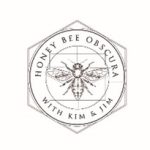 Dr. James E. Tew
Dr. James E. Tew
Emeritus Faculty, Entomology
The Ohio State University
[email protected]
Co-Host, Honey Bee
Obscura Podcast
www.honeybeeobscura.com
Click Here if you listened. We’re trying to gauge interest so only one question is required; however, there is a spot for feedback!
Read along below!
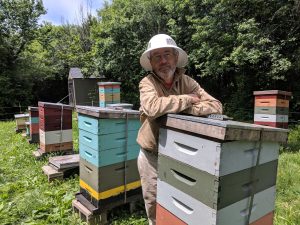
Beekeeping
A Doorway to Nature
By: Ross Conrad
It has been suggested that a spiritual crisis is at the center of the long emergency we collectively face. This crisis manifests itself as a disconnect from the natural world and is considered by many to be one of the primary forces driving the growing degradation of environmental health. When we see ourselves as separate from the natural world, we view nature through the lens of how valuable it is to us personally, either economically or for its beauty. This is the typical Western approach to the notion of pristine wilderness. When we place such values on the natural world and its “resources” viewing it simply as a means to gain financial wealth or other material benefits, it can reinforce our separation from it.
Research indicates that people who have a strong emotional and spiritual connection to nature are more likely to behave positively towards the environment, wildlife and habitats. This suggests that nurturing a greater connection to the natural world among the general population may be critical in addressing our spiritual crisis and helping to reverse the current environmental emergency. There are many ways this nurturing of our connection can manifest including hiking and camping, fishing and hunting, farming and gardening, or bird watching.
For the readers of Bee Culture, beekeeping likely provides one of our primary windows into the natural world. Through beekeeping, we enter the fascinating world of the honey bee; from the waggle dance and the intricacies of swarm behavior, to honey bee biology and the production, use, and unique characteristics of the products of the hive. Our fascination with bees stems from our personal connection to them and our deep understanding of them and their ways. It has been claimed that the honey bee and beekeeping is the most studied and written about topic in the world, second only to us humans. The truth of course, is that all living creatures are absolutely fascinating: we just tend to be clueless to most of the wonder, beauty and amazing intricacies and relationships involved in the lives of the plants, animals and insects that surround us and that we may come into contact with. We simply don’t interact with them enough to understand them and their ways, as well as we do the honey bee, and this can result in their being under-appreciated.
The world of beekeeping acts as a doorway through which we are able to then connect with the wider natural world of all the pests, diseases, plants and weather patterns that impact our bees; for better or worse.
The truth is that we are not separate from nature and the earth. Our bodies are literally made of the same minerals of the earth; we live our lives on the earth surrounded by the natural world; and when we die our body goes back to the earth and eventually gets recycled by the natural world. What we do to the natural world, we do to ourselves. We may not die when a rare pollinator dies out and becomes extinct, but surely a small part of something within us dies, something sacred and precious.
A host of studies have pointed to the fact that the stronger our personal connection to the natural world, the greater our concern for the environment (Whitburn et al., 2019; Mackay and Smidtt, 2019). There is also strong evidence of a positive relationship between a person’s connection to the natural world and one’s personal health, wellbeing and happiness (Capaldi et al., 2014; Barragan-Jason et al., 2023). When individuals are exposed to natural environments, such as mountain tops, coastlines, meadows and forests, the exposure results in stress reduction and assists in mental recovery following intense cognitive activities. It has even been found that a hospital window view onto a garden-like scene can be influential in reducing patients’ postoperative recovery periods and analgesic requirements.
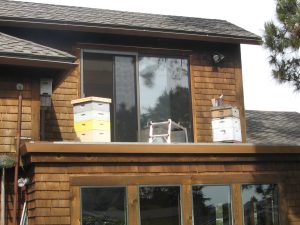
Beekeeping provides a doorway through which individuals can develop a strong spiritual connection to the natural world, especially those living in urban or suburban environments.
Embedded in diverse cultures around the world is the idea that people consciously and unconsciously seek connections with the natural world. The theory that this is a result of evolutionary history where humans have lived in intimate contact with nature was initially put forward by Harvard biologist and two-time Pulitzer prize-winner, E.O. Wilson, in the Biophilia hypothesis (Wilson, 1984). We humans appear to be innately attracted to other living organisms. Evidence suggests that this is particularly evident when life becomes difficult and stressful. How many of us can deny the relaxing effect of a quiet moment by a lake, the soothing effect of sitting by a river, the rejuvenation of a hike through a forest, a stress reducing stroll by the seaside, the calming effect of simply cuddling with a pet dog or cat, or spending time with the honey bee colonies in our apiaries. Simply put, we need contact with nature and the importance of our ability to connect with the natural world has only grown due to our increasingly urban, digital-screen and social media lifestyles that often serve to disconnect us from nature which in turn, may contribute to health and wellbeing problems.
One meta-analysis suggests positive short- and long-term health outcomes with improved self-esteem and mood with exposure to green environments. Proximity to water generated some of the greatest changes and the mentally ill experience the greatest self-esteem improvements (Barton and Pretty, 2010). Other researchers examining the link between finding meaning in life and our relationship to the natural world suggest numerous benefits that arise from a personal connection to the natural world. Not only does nature help us find meaning in life, it can enhance our appreciation for life, and how engaging in nature-based activities (such as beekeeping) “provides an avenue for many people to build meaningful lives” (Passmore and Krouse, 2023).
The idea that contact with nature benefits our mental and physical health appears to be strongly supported by the statistics. According to one researcher, “Animals have always played a prominent part in human life. Today, more people go to zoos each year than to all professional sporting events. A total of 56% of U.S. households own pets. Animals comprise more than 90% of the characters used in language acquisition and counting in children’s preschool books. Numerous studies establish that household animals are considered family members; we talk to them as if they were human, we carry their photographs, we share our bedrooms with them” (Frumkin, 2001).
Beekeepers have their own version of this in what is referred to as the “telling of the bees.” A tradition where it is believed that when the beekeeper dies, someone has to go tell the bees and perhaps hang a piece of black cloth on the hive to place it in mourning or else the colony would die out or abandon the hive. There appears to be many versions of this. Others tell the bees about important events in their lives particularly regarding a death in the family. Considering how easy it is for a beekeeper to put off caring for their bees with our busy lives, this tradition practically served as a way to keep the hives in the thoughts of those that survive a deceased beekeeper, so that they will hopefully prioritize finding a new custodian to take over responsibility for their care in a timely manner.
As a deep personal connection to the natural world, beekeeping has the potential to provide numerous benefits to its participants. Beekeeping encourages one to get exercise along with fresh air and sunshine, and there is significant evidence that suggests that even the occasional bee sting can help fortify the body’s immune system allowing it to more effectively deal with various ailments (provided of course that the person is not hyper allergic to honey bee venom). Beyond all this, we now know that beekeeping can also help establish a spiritual connection to the earth and all the life forms with which we share this planet; a connection that may be critical in our ability to effectively deal with our current reliance on damaging green-house gas emitting technologies that are slowly turning our lives and society upside down.
Many people are suggesting that the weather extremes we have been experiencing around the country and the world is the problem, when really the problem at its base level is the malevolent actions of individual people. Nurturing a greater connection to the natural world in greater numbers of people, such as through activities like beekeeping, might just hold part of the salvation for this world. Something to consider as you go about the business of caring for your bees this Autumn and are tucking your colonies in for the long Winter ahead.
Just the same as a month before,—
The house and the trees,
The barn’s brown gable, the vine by the door,—
Nothing changed but the hives of bees.
Before them, under the garden wall,
Forward and back,
Went drearily singing the chore-girl small,
Draping each hive with a shred of black.
Trembling, I listened: the Summer sun
Had the chill of snow;
For I knew she was telling the bees of one
Gone on the journey we all must go!
An excerpt from the poem Telling the Bees by John Greenleaf Whittier.
Read the full poem here: https://www.poetryfoundation.org/poems/45491/telling-the-bees
Ross Conrad is the author of Natural Beekeeping, Revised and Expanded 2nd Edition, and coauthor of The Land of Milk and Honey: A history of beekeeping in Vermont.
References:
Barragan-Jason, G., Loreau, M., de Mazancourt, C., Singer, M.C., Parmesan, C. (2023) Psychological and physical connections with nature improve both human well-being and nature conservation: A systematic review of meta-analyses, Biological Conservation, Volume 277:109842
Barton J, Pretty J. (2010) What is the best dose of nature and green exercise for improving mental health? A multi-study analysis. Environmental Science & Technology, 44(10):3947-55. doi: 10.1021/es903183r. PMID: 20337470.
Capaldi, C.A., Dopko, R.L., Zelenski, J.M. (2014) The relationship between nature connectedness and happiness: a meta-analysis, Frontiers in Psychology, Volume 5
Howard Frumkin, (2001) Beyond Toxicity: Human health and the natural environment, American Journal of Preventive Medicine, 20(3):234-240, ISSN 0749-3797, https://doi.org/10.1016/S0749-3797(00)00317-2
Mackay, C.M.L. and Schmitt, M.T. (2019) Do people who feel connected to nature do more to protect it? A meta-analysis, Journal of Environmental Psychology, 65:101323
Passmore, Holli-Anne and Krouse, Ashley, N. (2023) The Beyond-Human Natural World: Providing Meaning and Making Meaning, International Journal of Environmental Research and Public Health, 20(12):6170
Whitburn, J., Linklater, W., Abrahamse, W. (2019) Meta-Analysis of human connection to nature and proenvironmental behavior, Conservation Biology, https://doi.org/10.1111/cobi.13381
Wilson, E. O. (1984) Biophilia: the Human Bond with Other Species.: Harvard University Press, Cambridge, MA.
Click Here if you listened. We’re trying to gauge interest so only one question is required; however, there is a spot for feedback!
Read along below!
Found in Translation
Mite Drop!
By: Jay Evans, USDA Beltsville Bee Lab
Varroa mites remain the primary source of honey bee colony losses for beekeepers managing from one to 10,000 colonies. Scientists like us and ardent beekeepers are always on the hunt for new ways to reduce varroa damage to bees and their colonies. One intriguing strategy is to make mites simply fall off their adult bee hosts. Short of changing the electric charge of host or parasite, this repellency can come from 1) making hosts less grippy, 2) somehow clogging the incredibly strong tarsi (feet with ‘toes’ and a spongy, oily, arolia) of mites or 3) affecting mite behavior by making them less likely to find safe spots and hang on to their bees for dear life. Dislodged mites are far more vulnerable to hygienic worker bees and might also simply keep falling down to a hostless, hungry and hopefully, short life. This is probably a central reason that female varroa mites spend very little time wandering the combs of beehives unless they are moments away from entering the brood cell of a developing bee. While on adult bees, mites have much incentive to stay right there, whatever their host is doing to drop them.
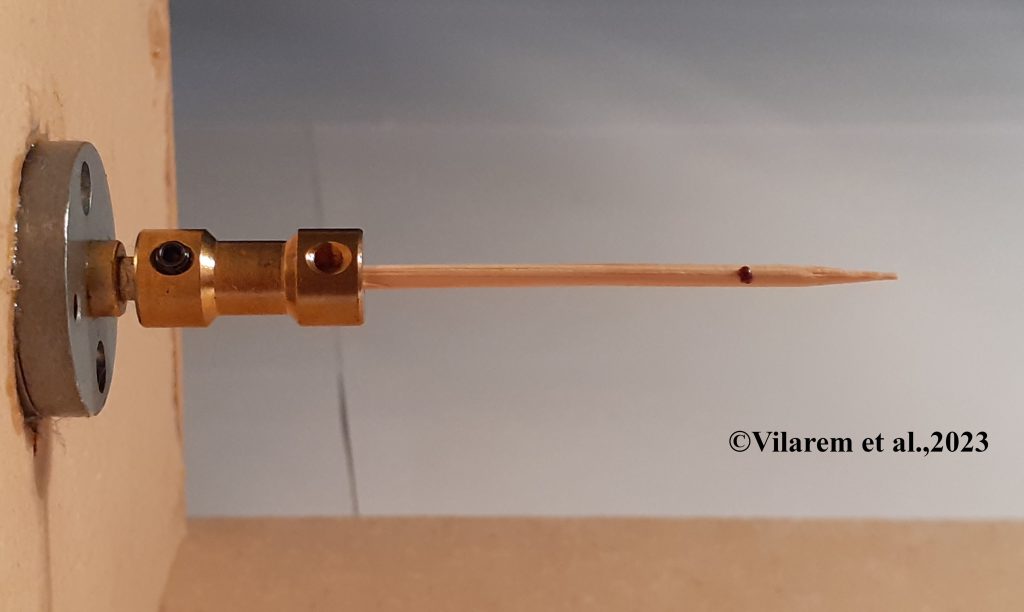 How do mites adhere to their bees so strongly? When mites are actively feeding on bees they are extremely hard to dislodge, since they are partly under the hardened plates of the bee itself and are gripping with a combination of ‘teeth’ and tarsi. Even while taking a break from feeding, mites know to find safe spots on the bee to attach, favoring locations on the abdomen or thorax that are both hairy and away from swinging legs and biting bee mandibles. How can one make them quit their bees given so many hiding places?
How do mites adhere to their bees so strongly? When mites are actively feeding on bees they are extremely hard to dislodge, since they are partly under the hardened plates of the bee itself and are gripping with a combination of ‘teeth’ and tarsi. Even while taking a break from feeding, mites know to find safe spots on the bee to attach, favoring locations on the abdomen or thorax that are both hairy and away from swinging legs and biting bee mandibles. How can one make them quit their bees given so many hiding places?
Caroline Vilarem and colleagues in France recently described an ambitious attempt to document the abilities of mites to hang onto surfaces when exposed to organic acids (Vilarem, C.; Piou, V.; Blanchard, S.; Vogelweith, F.; Vétillard, A. Lose Your Grip: Challenging Varroa destructor Host Attachment with Tartaric, Lactic, Formic, and Citric Acids, Appl. Sci. 2023, 13, 9085. https://doi.org/10.3390/app13169085). These scientists deployed one of the coolest low-tech tools to measure how well mites grip onto a surface. While their ‘Rotavar’ sounds both complex and expensive, it is actually a ‘motor-driven rotating toothpick’. Yes, you can do this at home, with a slow (three or so revolutions per minute) motor and a supply of toothpicks. The authors add to that an extremely careful experimental design and complex statistics to show the different abilities of mites to hang onto sticks and bees coated with acetic, citric, lactic, formic and tartaric acids. The results hint at new modes and new candidates for mite control, with the usual caveat that converting a controlled lab assay to field colonies will be challenging.
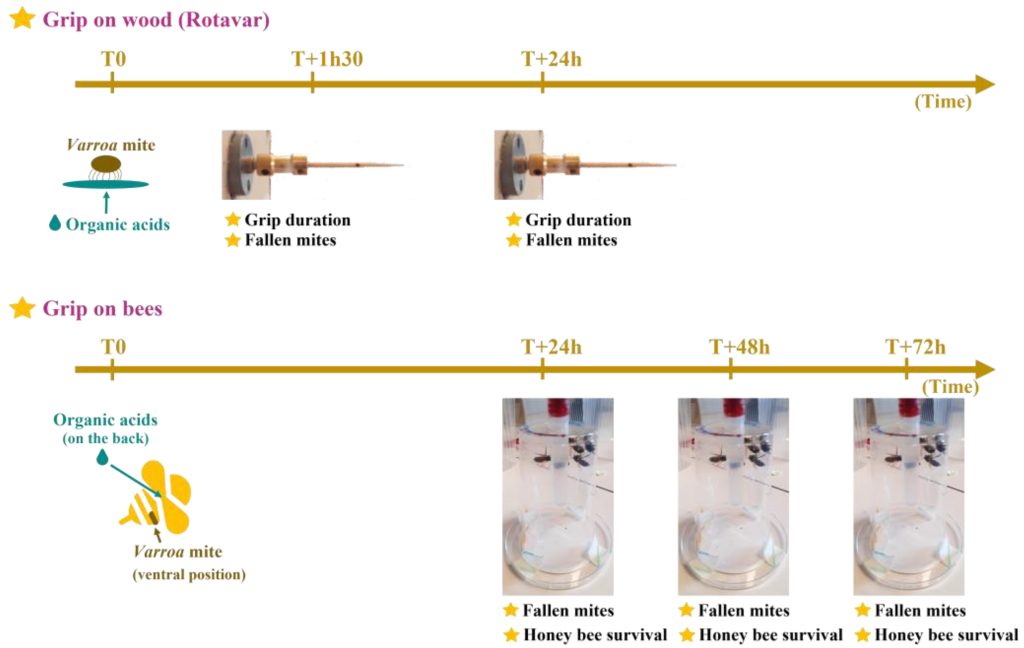
Schematic diagram of the experimental design and measured parameters. Grip on wood (Rotavar): This method relies on direct contact between Varroa’s arolia and the organic acids. The Rotavar set-up is a motor-driven rotating toothpick used to assess V. destructor’s grip. Grip on bees: the host attachment experiment applies acids to the backs of honey bees to remove mites. T0 represents the administration time for treatments; T + 1 h 30, 24 h, 48 h, or 72 h stand for the time post administration used to make measurements. Figure from https://doi.org/10.3390/app13169085
Some highlights: First, acidity itself does not seem to be the solution. Most notably, even high doses of acetic acid had little impact on the abilities of mites to grab toothpicks and this candidate was quickly discarded. So, what can we glean from the differences between the tested acids? Tartaric acid worked great at dislodging mites from spinning toothpicks but was surprisingly poor at dislodging mites from bees. Prior work suggests that the mode of action for tartaric acid is, at least in part, toxicity towards mites. It is possible that the levels of tartaric acid needed to coat bees with a toxic dose are higher than they are on a relatively smooth and barren toothpick. Toothpicks also attract watery compounds (hydrophilic) while bees are coated with oils and are hence more water-repellent (hydrophobic). Maybe the availability of tartaric acid on toothpicks is higher than it would be on oilier bee bodies. Formic acid also worked much better on the wood surface than on bees, an intriguing insight for a well-used and effective mite control. Formic acid is also known to be directly toxic to mites and their cells, and the authors make clear that both direct toxicity and grippiness are clear and perhaps synergistic targets for mite control. The widely used miticide oxalic acid also wins by being directly toxic to mites at levels that are relatively safe for bees, demonstrating that there are many possible ways to turn organic acids into effective treatments.
Lactic acid came out as the best candidate in the study group for divorcing mites from their bees. This acid worked well at dislodging mites from both toothpicks and bees. Lactic acid does not appear to be highly toxic to mites and instead seems to act by changing the mechanics of hanging on. This is a nice lead for exploring acids with similar qualities for their abilities to both grease the ‘Rotavar’ and make bees a more slippery host. In another intriguing result from this nice study, mites that simply walked across paper holding lactic acid were then less good in future grip tests. What is it about lactic acid that burns, cleans or otherwise insults the complex and surprisingly ‘soft’ tarsi of mites?
If this topic has gripped you, consider reading up on the field thanks to a recent open-access paper on stickiness by graduate student Luc van den Boogaart and colleagues in the Netherlands (van den Boogaart, L.M.; Langowski, J.K.A.; Amador, G.J. Studying Stickiness: Methods, Trade-Offs, and Perspectives in Measuring Reversible Biological Adhesion and Friction. Biomimetics 2022, 7, 134; https://www.mdpi.com/2313-7673/7/3/134). For those of us who have stored ‘Freshman Physics’ in a remote hard drive, they give a clear review of how these forces work across organisms; in their words ‘from ticks to tree frogs’. Maybe their figures and insights will inspire a beekeeper or scientist to dream up a safe, effective route to dislodge mites from bees and prevent them from climbing back on. Pulling in people with a knowledge of physics, or just really good imaginations and the ability to build and deploy Rotavars (imagine how entertaining those can be, a la squirrel spinners… https://www.youtube.com/shorts/nBKb_z4_tGY), can only help in the hunt for new mite controls and healthier bees.
]]>PRESS RELEASE

Photo by Matthias Münning on Unsplash
According to HTF Market Intelligence, the Global Honey food market to witness a CAGR of 4.2% during forecast period of 2023-2028. The market is segmented by Global Honey Food Market Breakdown by Application (Food & Beverage, Pharmaceuticals, Others) by Type (Table Honey, Cooking Ingredient Honey) by Distribution Channel (Hypermarkets and Supermarkets, Convenience Stores, Specialty Stores, Others) by Packaging Type (Bottle, Jar, Tube, Tub, Others) and by Geography (North America, South America, Europe, Asia Pacific, MEA). The Honey food market size is estimated to increase by USD 2.6 Billion at a CAGR of 4.2% from 2023 to 2028. The report includes historic market data from 2017 to 2022E. Currently, market value is pegged at USD 8.9 Billion.
HTF Market Intelligence published a new research publication on Honey food Market Insights, to 2028″ with 150+pages and enriched with self-explained Tables and charts in presentable format. In the Study you will find new evolving Trends, Drivers, Restraints, Opportunities generated by targeting market associated stakeholders. The growth of the Honey food market was mainly driven by the increasing R&D spending across the world, however latest scenario and economic slowdown have changed complete market dynamics. Some of the key players profiled in the study are Barkman Honey, LLC (United States), Bee Maid Honey Limited (Canada), Billy Bee Honey Products Company (Canada), Capilano Honey Limited (Australia), Comvita Limited (New Zealand), Dabur India Limited (India), Dalian Sangdi Honeybee Co., Ltd. (China), Beeyond the Hive (United States), Lamex Foods (United States), Hi-Tech Natural Products (India).
Definition:
Honey foods are defined as foods that have some honey as an ingredient. By gathering nectar from flowers, honeybees create honey, a naturally sweet food. It is a natural phenomenon for honeybees to produce honey. The bees help store the honey as a food source in their wax honeycombs within beehives. Honey-containing foods are very effective in nature because they provide the meal a natural sweetness and protect consumers from artificial sweeteners. Consuming foods with honey in them can help fend against and treat diseases like cancer. A surge in consumer interest in consuming meals cooked with honey throughout the world is driving the market for honey-based cuisine.
We are here to share current happenings in the bee industry. Bee Culture gathers and shares articles published by outside sources. For more information about this specific article, please visit the original publish source: https://www.digitaljournal.com/pr/news/htf-market-intelligence/honey-food-market-will-witness-a-4-2-cagr-top-key-players-and-forecast-to-2028#ixzz880N3RpmC
]]>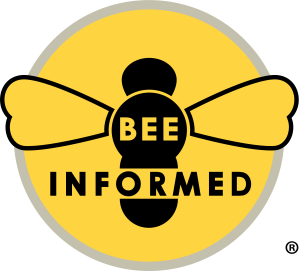 The Bee Informed Partnership (BIP) is pleased to announce the release of a new beekeeper management application that is a free version of its professional honey bee health and management tracking application at research.beeinformed.org!
The Bee Informed Partnership (BIP) is pleased to announce the release of a new beekeeper management application that is a free version of its professional honey bee health and management tracking application at research.beeinformed.org!
BIP ArcHive provides a seamless way for beekeepers to record activities and observations in the bee yard, giving insights to improve colony management.
- Map your bee yards
- Track the same colonies over time
- Record Varroa levels
- Mark conditions you observe in your colonies
- Curate a continuous history of honey bee health!
This new application called BIP ArcHive is based on the database and hive inspection procedures used by BIP Honey Bee Health Specialists in commercial operations since 2011. The application aids the beekeeper, inspector, or beekeeping consultant in keeping track of colony health and management actions over time. The free version, BIP ArcHive, is focused for individuals to track their own colonies and quickly view a timeline of management actions and varroa levels, enabling the beekeeper to better visualize their varroa levels in relation to management they do.
 BIP ArcHive home screen allows data entry and viewing a timeline of management applied and varroa levels. Access BIP ArcHive at https://research.beeinformed.org/bip-archive-free/
BIP ArcHive home screen allows data entry and viewing a timeline of management applied and varroa levels. Access BIP ArcHive at https://research.beeinformed.org/bip-archive-free/
A web version and mobile app is available for use while networked or remote, for both desktop and mobile use. A portion of BIP ArcHive development was sponsored by a USDA APHIS cooperative agreement and continues the tradition at BIP to enable citizen scientists and aspiring professional beekeepers to utilize technology and practices used by our Honey Bee Health Specialists and Technical Transfer team.
This and other BIP programs are made possible with the support of beekeepers like you. Please consider donating to support this and other beekeeper services.
Visit BIP’s website: https://beeinformed.org/
]]>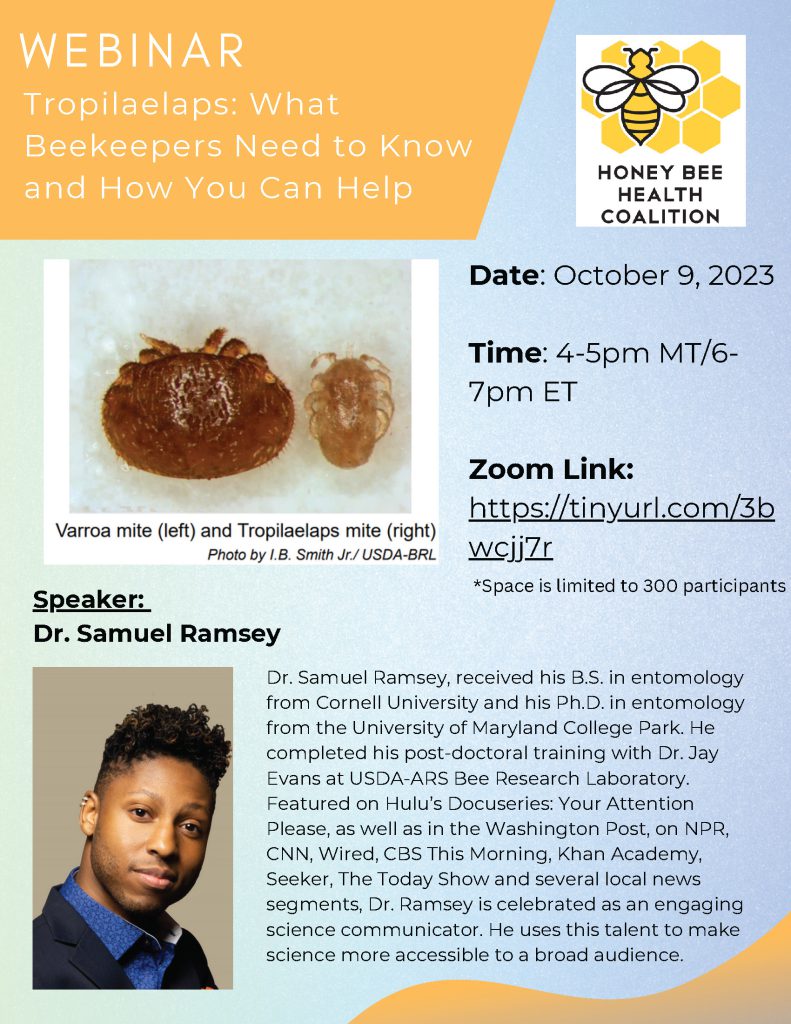
Link:
]]>